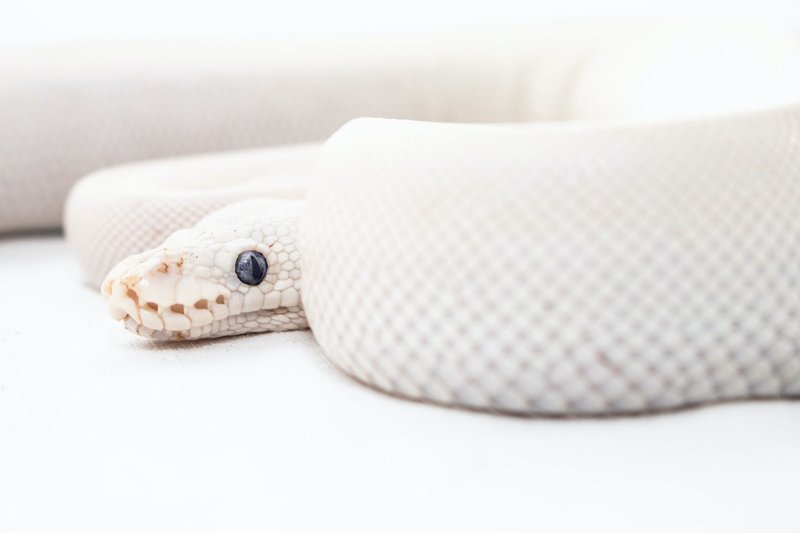
Understanding the common health issues in ball pythons can help you ensure your scaly friend thrives. Just like taking care of a houseplant means understanding its needs—light, water, and soil nutrients—you’ll need to tune in to your ball python’s specific needs regarding habitat, diet, and overall care. By keeping a watchful eye and providing the right conditions, you can help prevent many health issues before they even start.
1. Respiratory Infections
One of the most common health issues seen in ball pythons is respiratory infections. Think of it like catching a cold; while it might not seem serious at first, it can lead to more significant issues if not treated promptly. These infections can be caused by several factors, including poor humidity levels, temperature fluctuations, and dirty living conditions.
Causes of Respiratory Infections
Respiratory infections in ball pythons often stem from two main causes: environmental stressors and pathogens. Here’s a breakdown of what can lead to these infections:
- Improper Humidity: Ball pythons thrive in environments with 50-60% humidity. Too low can dry out their respiratory system, while too high can encourage mold and bacteria.
- Temperature Fluctuations: If your ball python’s enclosure isn’t kept warm enough, their immune system can weaken, making them more susceptible to infections.
- Poor Hygiene: A dirty enclosure can be a breeding ground for bacteria, increasing the risk of respiratory problems.
Recognizing the Signs
You might be wondering, “How do I know if my ball python has a respiratory infection?” Look for these signs:
– Wheezing or clicking sounds
– Excessive mucus or fluid around the nostrils
– Lethargy or refusal to eat
If you notice these symptoms, it’s time to consult a vet.
2. Shedding Problems
Another issue ball pythons often face is incomplete shedding. This might seem minor, but it can lead to skin irritation and even infections. Imagine trying to peel off a sunburn; it’s uncomfortable and can leave behind some nasty reminders. If your snake isn’t shedding properly, a few factors could be causing this.
Causes of Shedding Problems
Incomplete sheds can happen for various reasons, including:
- Low Humidity: If the humidity is too low, it can prevent shedding. A ball python’s habitat should ideally be at least 55-65% humidity during shedding.
- Health Issues: Conditions like mites or infections can interfere with the shedding process.
- Dietary Deficiencies: Not getting enough nutrients can affect skin quality and shedding.
Preventing Shedding Issues
To help ensure your ball python sheds correctly, consider these tips:
– Keep a moisture hide in their enclosure, where they can feel comfortable during shedding.
– Maintain appropriate humidity levels by misting the enclosure or using a humidifier.
– Offer a balanced diet that includes properly sized prey, rich in nutrients.
3. Obesity
Believe it or not, ball pythons can become overweight. It’s a bit like how some people struggle to resist that extra slice of cake; it can be easy for your snake to indulge if you’re not careful about feeding. Obesity can lead to serious health issues, including heart disease and metabolic problems.
Recognizing Obesity in Ball Pythons
You might notice your ball python is overweight if they exhibit these signs:
– A round body shape rather than a streamlined, healthy shape.
– Difficulty moving or climbing.
– A lack of interest in regular activity or exploration.
Preventing Obesity
To keep your ball python fit and healthy, follow these guidelines:
- Portion Control: Offer appropriately sized meals based on their age and size. As a rule of thumb, a meal should be about the width of the snake’s body.
- Regular Feeding Schedule: Feed juveniles every 5-7 days and adults every 10-14 days.
- Enrichment Activities: Provide opportunities for exercise with climbing structures and hideouts.
4. Mites and Parasites
Mites and parasites can be a real headache for ball python owners. Think of them like uninvited guests that just won’t leave. These tiny pests can cause significant distress and health problems for your snake, so it’s essential to detect them early.
Identifying Mites and Parasites
Keep an eye out for signs of infestation, such as:
– Excessive scratching or rubbing against objects in the enclosure.
– Tiny black specks on the snake’s skin or in their enclosure. These are often mite droppings.
– Poor appetite or weight loss can indicate a more severe infestation.
Preventing Infestations
To protect your ball python from these pests:
- Regular Cleaning: Clean and disinfect your snake’s enclosure regularly to minimize the risk of infestations.
- Quarantine New Additions: If you bring home a new snake, keep it separate for at least 30 days to ensure it’s free of pests.
- Routine Health Checks: Regularly check your snake for signs of mites or other parasites, especially before and after shedding.
5. Dehydration
Dehydration is another health issue that can affect ball pythons, especially if they’re not getting enough water. Picture yourself getting thirsty during a long hike; it’s uncomfortable and can lead to more serious problems. For snakes, dehydration can lead to lethargy, poor shedding, and kidney issues.
Signs of Dehydration
Here are some signs that your ball python may be dehydrated:
– Sunken eyes can be a clear indicator.
– Loss of skin elasticity; if you pinch the skin, it doesn’t bounce back quickly.
– Lethargy and lack of appetite.
Preventing Dehydration
To keep your ball python hydrated, you can:
- Provide Fresh Water: Ensure there’s always fresh water in their enclosure. Change it regularly to keep it clean.
- Humidity Control: Monitor the humidity levels to ensure they’re within the ideal range for your snake.
- Encourage Drinking: Consider adding a water bowl that encourages your snake to soak, particularly during shedding.
6. Stress and Behavioral Issues
Lastly, let’s talk about stress. Just like us, ball pythons can get stressed out, and honestly, stress can lead to a whole host of health problems. Factors like handling too much, loud noises, or a messy habitat can all contribute to their stress levels.
Identifying Stress
Look for signs that your ball python is stressed, such as:
– Increased hiding or avoidance behavior.
– Aggression when handled.
– Changes in eating habits, such as refusing food.
Preventing Stress
To minimize your ball python’s stress:
- Create a Secure Environment: Make sure their enclosure is well-furnished and safe, with plenty of hiding spots.
- Limit Handling: While socializing is essential, don’t overdo it. Give them time alone to relax.
- Control Noise Levels: Keep their enclosure in a quiet area of your home to reduce stress from loud sounds.
Caring for a ball python is a rewarding experience, but it comes with its challenges. Understanding *common health issues in ball pythons* can help you be a more attentive owner. By taking proactive measures—like monitoring humidity, providing a balanced diet, and maintaining a clean environment—you can prevent many of the problems that can affect these beautiful snakes.
Remember, every ball python is unique, and keeping a close watch on their behavior and health can ensure they live a long, happy life. So, enjoy your snake-keeping journey and give your scaly friend the best care possible!

